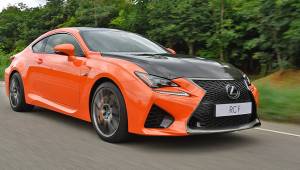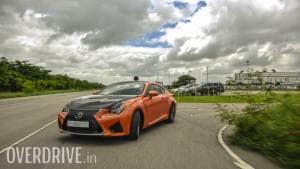Continental shift: Muscle cars at the NATRAX
August 1964. John, Paul, George and Ringo landed on American soil for the first time ever. They brought with them Beatlemania - crowds of swooning, sometimes fainting, fans - that would sweep the US of A. It sparked what came to be known as the British Invasion, swinging the tide of American dominance in rock and roll, changing the world's musical landscape forever; imagine a world without Oasis, and the hundreds of mangled Wonderwall covers?
But just a few months prior, in April 1964, Ford debuted a car that definitely put Detroit back in the spotlight. A car so ubiquitous it became America's best-selling compact car in six weeks, going on to sell over a million units in two years! The Mustang, after the Model T, is arguably the Blue Oval's greatest contribution to cars, and next to the hamburger, America's most fun contribution to the world. While the muscle car may have been pioneered before it, it brought the formula back to popularity - a 2+2 body style, big engine up front, rear-wheel drive - as the original Pony car with the added benefit of being smaller, and more agile than a traditional muscle car.
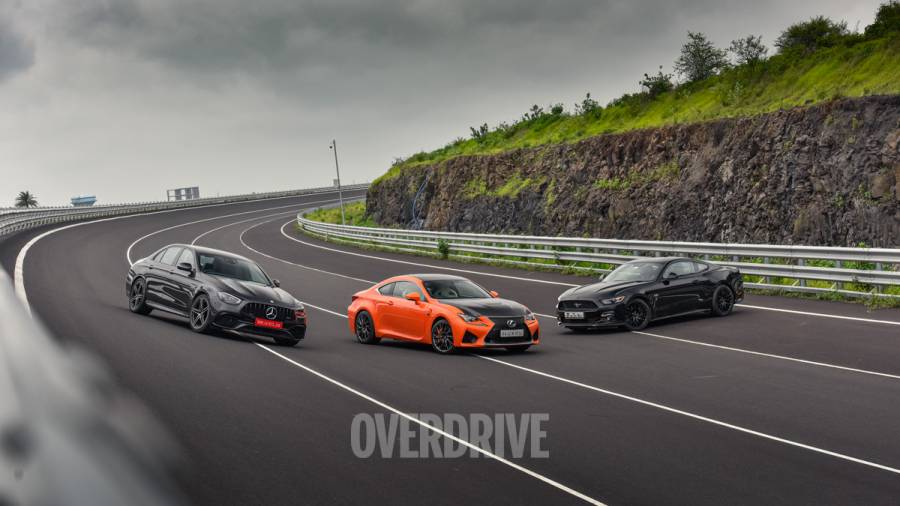
It's a formula that nearly every car manufacturer around the world has tried their hand at since, and the three cars we have lined up on a rainy day at the NATRAX, India's best testing facility, bear testament to just how far the muscle car has come. Granted, it's also a reminder that in 2021, just one of these cars is still on sale, having made the switch to forced induction several years prior. The other two, the ones with large block, naturally-aspirated V8s, aren't. And that in a year where I've already driven more electric cars in three months than I have in three years, it's almost privilege to drive a car that's still all engine, with no turbos or superchargers boosting it, let alone two.
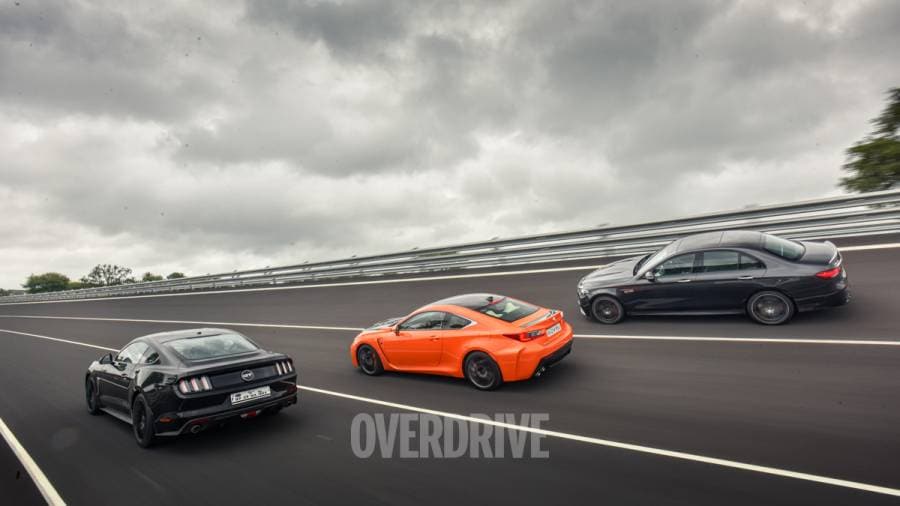
It makes me wonder how much longer we'll be able to celebrate good ol' fossil power in our anniversary issues, leave alone on our cover. With everything that's changing, it's a good reminder of why we're enthusiasts in the first place - and the muscle car holds a special place in my heart, as I'm sure it does for scores of other enthusiasts. Who hasn't grown up lusting after a 'Stang, a Camaro, Challenger, Firebird, or Chevelle to hang out in, tail first around every corner, big V8 soundtrack booming? Even the very names of the true blue muscle cars are cooler.
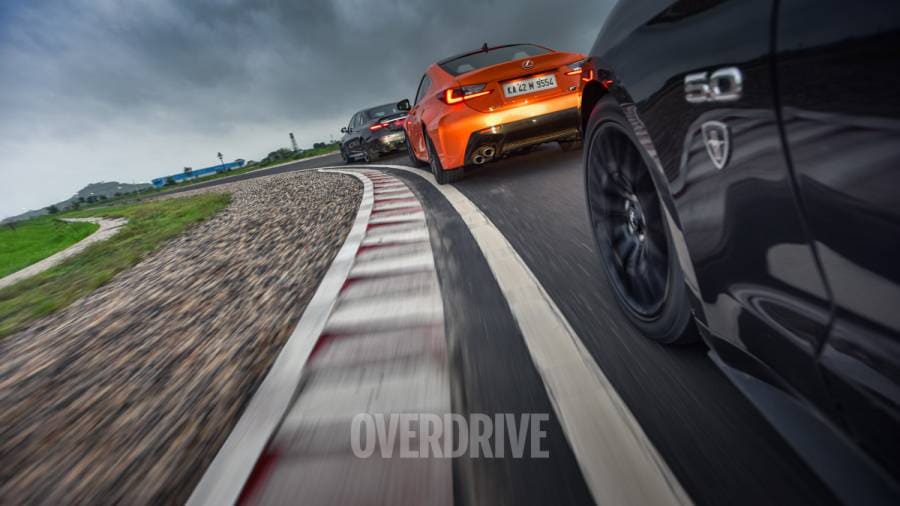
The Mustang itself, in its new generation which first came to India in 2016, was a bit of a revelation. This particular car's novel registration plates are a fitting tribute to its roots - it may have finally moved on from a live rear axle (after near 50 years of being a resolute stickler for tradition) with the new-gen, but it most definitely is a 'Stang right down to the affinity it has for getting its tail out every single chance it gets.
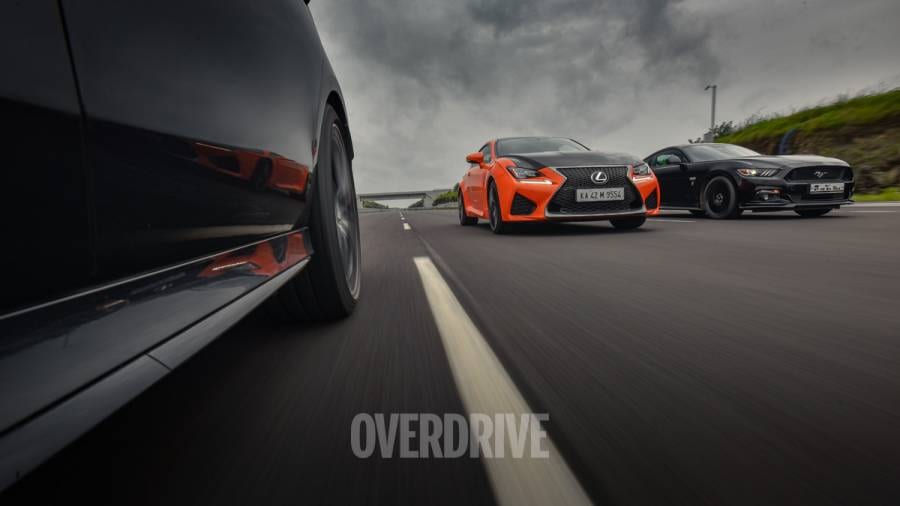
Lexus' RC F is Japan throwing their hat in the ring, a brawnier rear-wheel drive coupe than the likes of anything from the (now defunct) SC, LC or even RC line-up. One look at its origami body panels and (optional) exposed carbon-fibre-weave hood and roof tell you it's already a more advanced take on the muscle car, packing the most powerful 5.0-litre V8 Lexus has ever built! Of course, it wouldn't be a Lexus if it wasn't also comfortable. Or stuffed with technology.
The RC F has the distinction of being the first ever front engined, rear-wheel-drive car in history to offer a torque transfer system. Enter the TVD, or the torque vectoring differential - a seamless transitioning between the electronic and mechanical to variably split torque between the left and right rear wheels to help controlled drifts, so that you don't end up on YouTube in a video titled "Muscle car fails".

In the German corner, we have the ultimate expression of the Germans' take on the muscle car - the Jekyll and Hyde Mercedes-AMG E63 S. Twin-turbos. Hot V8. Valved exhaust. Air suspension. Rear-wheel drive, but optionally. Yup, the Germans have perfected the muscle car formula in a proper four-door sedan, and given it all-wheel drive, but with the option of decoupling power from the front wheels, directing all its monstrous torque to the rear wheels. Of course, the way you do that is by selecting the aptly named Drift mode from the widescreen touchscreen infotainment. It doesn't get any more cutting edge than this, though it doesn't really tick the 'affordable' box in the list of muscle car requirements.
Ford Mustang: Donuts for days
But first, the genesis of the car that revived American muscle. Lee Iacocca, then-president and general manager of Ford, wanted a sporty, youthful car and the Mustang was developed on a tight budget. First shown in '64, the actual model year of the production cars were '65 so it's not uncommon to see early cars referenced as 1964 1/2 models - but that wouldn't have fit on a novelty number plate. The Mustang sold nearly a quarter of its annual sales estimate on its very first day of being on sale! It had a good run up to the early '70s before the oil crisis saw sales drop off, what with the car growing in size and engine capacity.
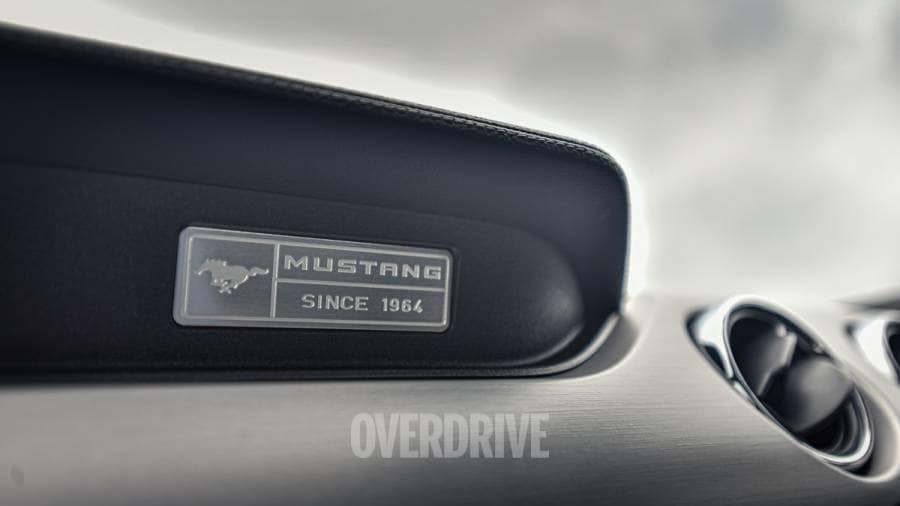
What you need to know about the run of unremarkable Mustangs from the mid-70s to the mid-90s is exactly that, with the Fox-platformed cars being better left forgotten to most fans of the Pony car. Where things pick up again was in 1994 with a new more aerodynamic Mustang with more nostalgic touches, which led Ford to the 2005 Mustang, which was the homage to the original everyone was waiting for - apart from finally moving on from the 25-year old Fox platform, another move people were waiting for. It proved to be so popular that it spurred GM to resurrect the Camaro, and Dodge to do the same with the Challenger.
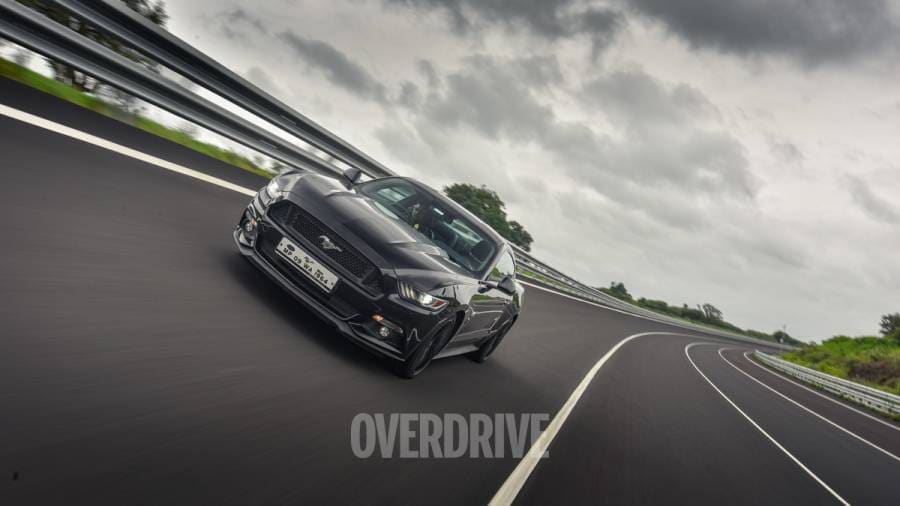
Which brings us to this sixth-generation Mustang, revealed in 2015. Where the previous generation shed its decades old platform, the new-gen lost its even older live rear axle and finally brought the Mustang nameplate into the modern era. The car was more of a Mustang than ever before with its lithe fastback shape, iconic three slat tail lights, and the fact that the 5.0 badge actually displaced what it said. My first encounter with it was at the Buddh International Circuit, as a cub journalist. The Mustang had introduced a line lock feature that held the front brakes electronically for big smoky burnouts; Ford was so keen to not have anyone try it out, they disabled it. Obviously then the first thing I did was try and live out my muscle car fantasies by prodding it into oversteer. The car obliged, but not without some trying and I came away suitably impressed at how well mannered it was.
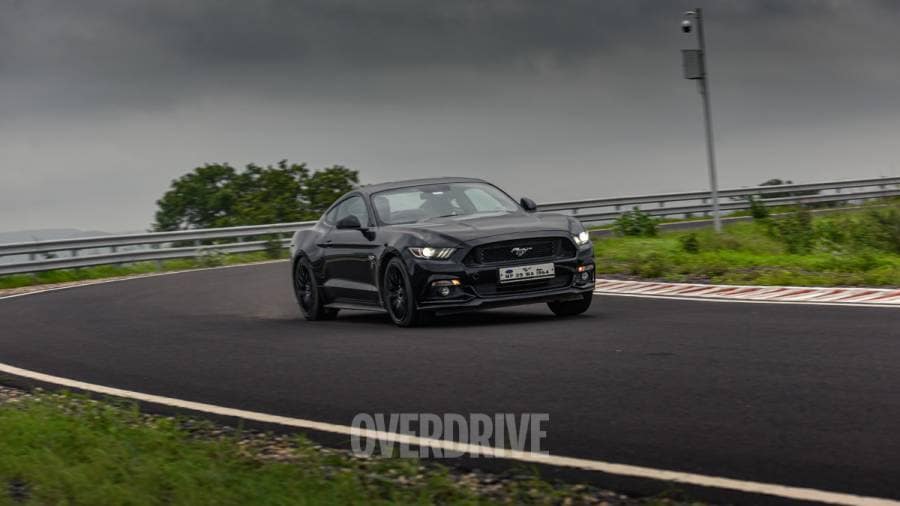
So with this one, even though it's a car borrowed from a friend on the promise of good behaviour, I couldn't help but be a little bad. Except, what time and experience can do to driving skills is inversely proportional to what they can do to tyres - this car was still on its first set of tyres from 2016. Traction was understandably vintage. It made getting back on the power, after something as innocuous as a U-turn a hairy experience, with the rear tyres enthusiastically wanting to overtake the fronts. I felt like nearly every Mustang driver at a cars and coffee meet ever! So far, so muscle car.
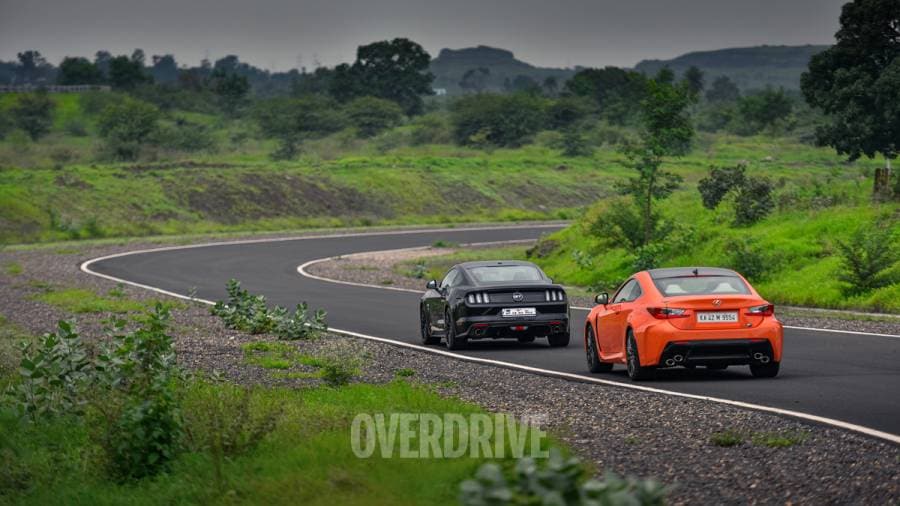
At the 3.6km long handling track within the sprawling NATRAX facility, every corner, straight and camber change has been designed to help a vehicle's engineers dial it in. In this 1,691kg Mustang, the track suddenly felt like it was Ebisu circuit, Japan's most famous drift destination. All it took was a sniff of throttle to break traction, with the Mustang's electronics struggling to rein in all 401PS and 515Nm of torque. It does have to be said though, the 6-speed DCT will make you raise your eyebrows when you see it on the spec sheet, but from behind the wheel, it doesn't feel like a lightning-quick, modern dual-clutch transmission. Downshifts on corner entries are especially slow, even in the raciest of drive modes, and with peak torque coming in at 4,250rpm, you'd think the Mustang would be left behind. But in reality, it means you can get on the power early, wait for the revs to build and break traction. All the while accompanied by the loudest exhaust note of the three cars here.
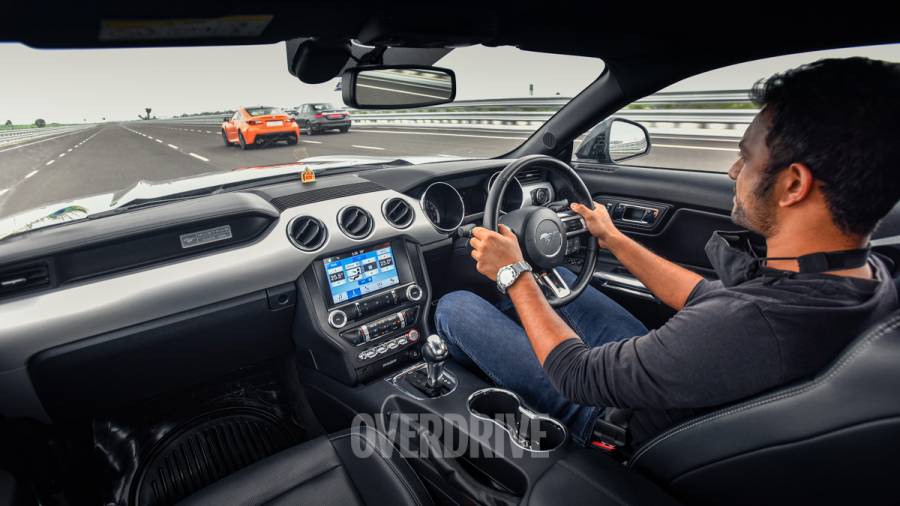
Following the other two around at a quick pace, it became very clear that this Mustang could be a handful if you weren't paying attention. While the steering is beautifully weighted by today's standards, and just quick enough to catch slides and counter steer without it being snappy, the tyres just weren't cut out for this kind of work, and we made the decision to not see what kind of speeds the Mustang could do on the high-speed track - and if it could actually better its own 250kmph electronically limited top speed. Instead, I nailed the throttle every chance I got, watched the beautifully analogue instrument dials in action, and let the car dance around its rear axle. This is something it wanted to do even in a straight line, instantly nixing any ideas of a three-up drag race - the Mustang was just getting left behind even though its 5-something second run to 100kmph from zero puts it in the ballpark of the Lexus.
Lexus RC F: Served raw, as per taste
On the same scale as the Mustang, with rubber of a similar vintage except for a marginally newer rear set of tyres, the Lexus RC F actually appears like it follows the muscle car formula quite faithfully. Large 5.0-litre naturally-aspirated V8 up front, rear-wheel drive, and heavy as a boat at 1,795kg kerb. When Lexus debuted the RC sports coupe in 2013, little did they know that the more hardcore version from their sports division, the RC-F, would unanimously go down in history as Japan's first muscle car. After all, it was their first performance car since the incredible V10-powered LFA, which didn't quite go as planned for Lexus at the time, but has since appreciated massively in value.
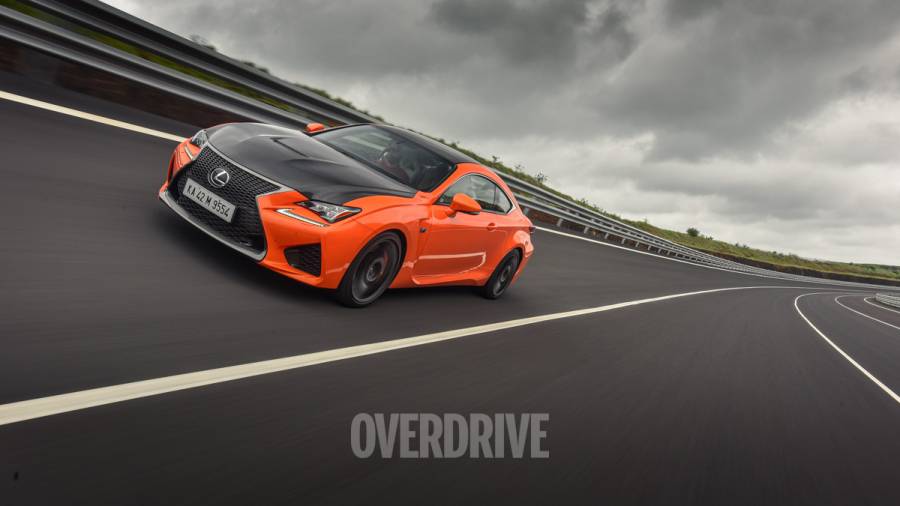
The RC F was a strange sports coupe with borrowed underpinnings and components from other cars in the line-up. Like the chassis from the soft luxury tourer, the IS C, that too in its cabriolet form. The engine was from the IS F, but massaged to 467PS and 527Nm, paired with an 8-speed auto.
But as an end result? Holy California roll!
We're talking the most underrated, and beautifully balanced sportscar I've ever laid my hands on! I hadn't been fortunate enough to drive the RC F when it came out in India in 2017 at an astronomical price of Rs 2 crore, before options. Like the carbon fibre hood and roof on this particular car. Or the expensive, and heavy, torque vectoring differential (TVD) that adds capability to the standard car's torsen limited slip differential at the rear.
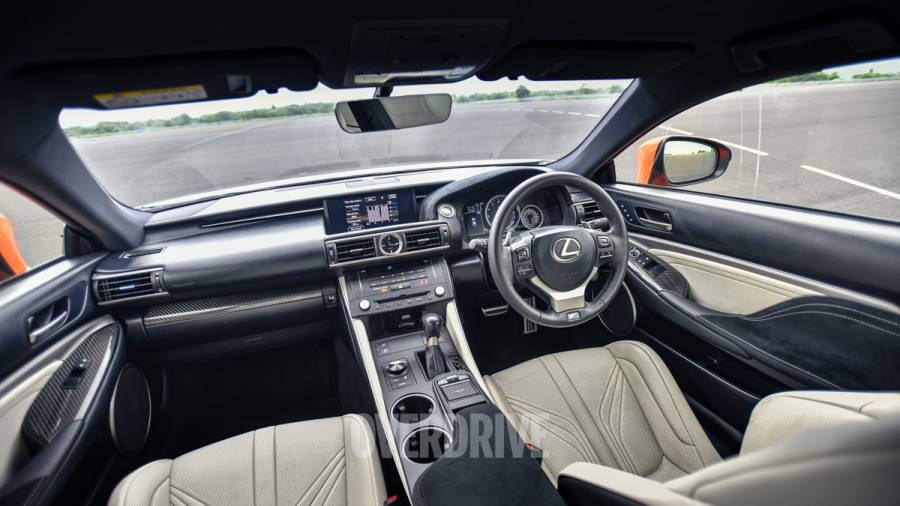
And when you first sit in it, you definitely question the price tag. It was old-school in 2017, and now four years later, it feels ancient. But it's fantastically built, and you start to appreciate the little touches. Like seats that envelope you and hold you in place when you're sliding around, or the crafted instrument dials that do anything but distract, and tell you how close you are to the impressive 7,300rpm redline without resorting to flashing lights or any such theatrics. It's all very understated, very mature, very comfortable. And very Japanese.
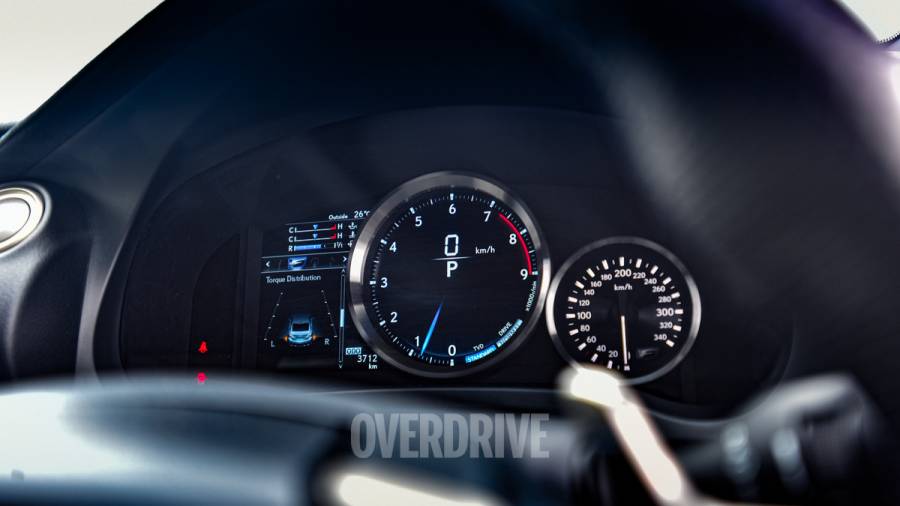
Torque comes in earlier than the Mustang, and it feels stronger too. The engine, titanium valves, forged rods and all, feels like it spins up weightlessly, with the augmented in-cabin sound track feeling so natural, it makes the noises some modern performance cars make sound like a kid's soundboard. Lexus, as with the howling LFA before, has tuned the induction and exhaust sound so as to create a deep, bass tone up to about 3,000 revs, which changes to a shriek as you approach redline. The engine even finds the time to switch between the efficiency-enhancing Atkinson combustion cycle (usual fare for hybrids) at cruising speeds, and the Otto cycle for all-out power when called for. Again, the transition is seamless and you'd be none the wiser for it.
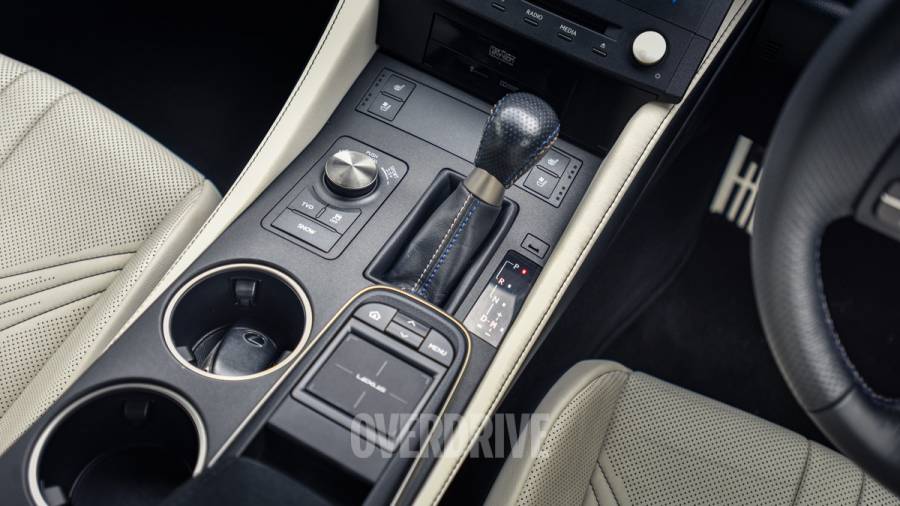
Similarly, the traction control system, which can be operated independent of the TVD, can be set in increments based on your skill and comfort, and the more laps I put in around the handling track, the more lenient I let it be till it was but natural to let the rear tyres spin up a little getting out of a corner, while setting up the car for the next.

Threading the RC F around the tight track was a cinch; I really can't overstate just how much of a difference a nice, linear steering rack can make to your confidence. Though, it has to be said - in true muscle car fashion, the RC F has trouble putting its power down.
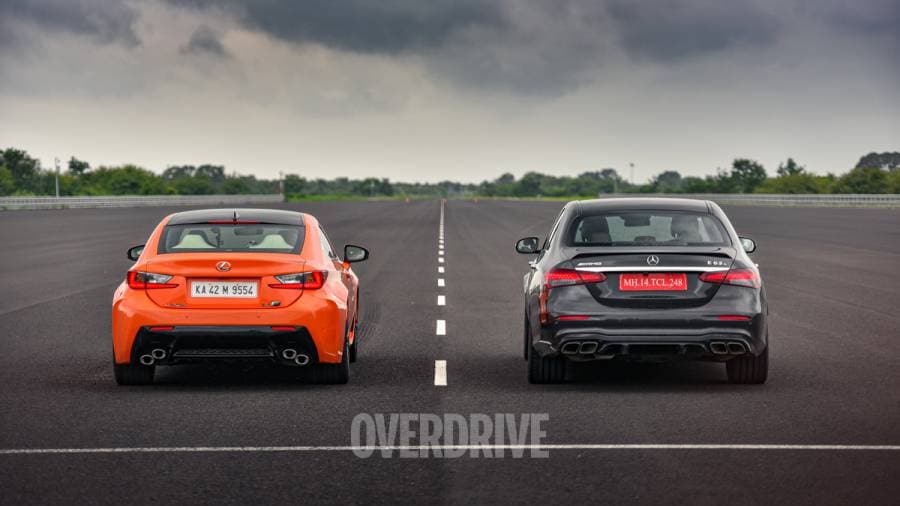
With no launch control except for your right foot, I couldn't get anywhere close to the claimed 4.4s 0-100kmph timing. A time in the early 5s is the best I got, understandably putting the RC F far behind the manic AMG in a head-to-head drag race. Though, with enough practice, fresh, sticky rubber and fully dry tarmac, I reckon a timing closer to claimed would be possible.
Mercedes-AMG E63 S: Last order
Get your serving of the best of German muscle while you can. Sure, the Mercedes-AMG E63 S has just gone on sale in India and will be on sale for the next few years at least. But with news of the AMG C63 dropping its V8 for - wait for it - a four-cylinder hybrid, it only seems like it's a matter of time before the V8s are reserved for only top-flight AMGs, like the GT or the upcoming new SL. In fact, there's even reports of AMG pulling all V8-powered models in America, the land of the muscle car, over supply shortages.
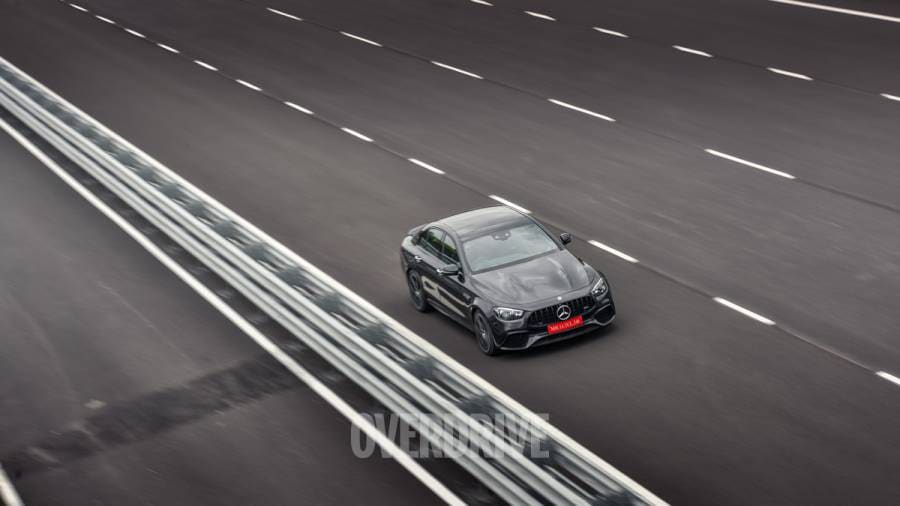
That makes the AMG E63 S' blistering 0-100kmph run of 3.8s IN THE WET (!) all the more bittersweet. Because, while the speed is one thing, the drama of that V8 is another. Packed with all manners of electronic trickery, the 4.0-litre, twin-turbo V8's 612PS and 850Nm makes its way down to all four wheels via 4Matic+ all-wheel drive with a typical German efficiency, tinged with a manic rush that's only exemplified in the Race mode, where each shift throws your head back into the sumptuous seats. We tried over, and over, and over, and the timings were never more than a couple of tenths off that 3.8s mark. It absolutely decimated the Lexus in a drag race, with its launch control being unbelievably effective at catapulting it away. I've also no doubt the heavier E63 S would put down the quicker lap time too, despite the extra doors, wheelbase and size.
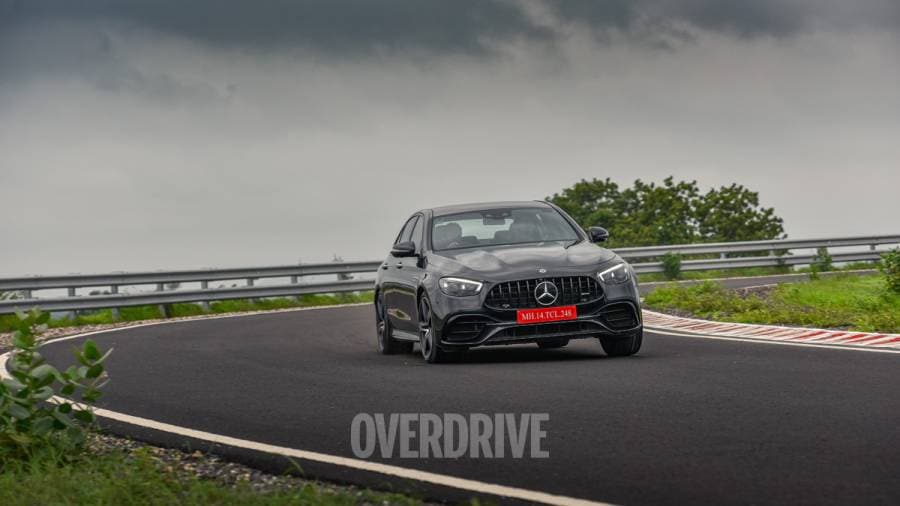
At the NATRAX handling track, where the Mustang and RC F already felt a size too large, the E63 S feels like a bull in a china shop. Except, the car affords such fine control, even if the front feels a little heavy, and the steering a little slow, that you can accurately place it right at apexes without trying too hard. Of course, compared to the naturally aspirated muscle cars alongside, the E63 S' turbo rush feels less characterful but you've hardly time to notice as the buildup of revs is manic enough to make you laugh instead at how you've piled on speed. This effect is especially apparent on the high-speed track.
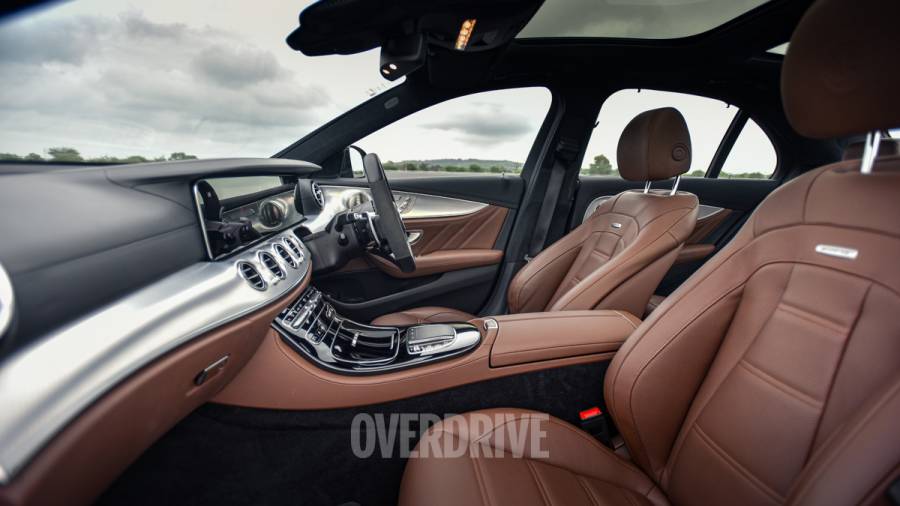
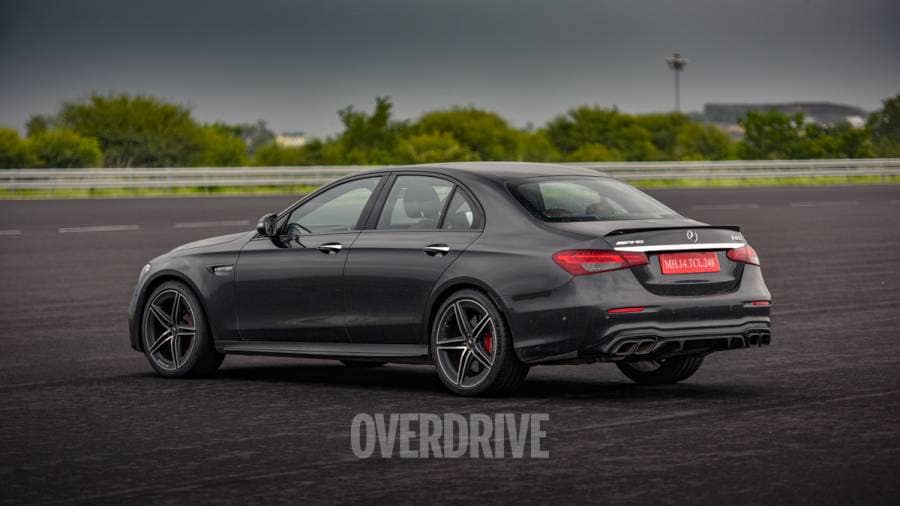
From launch, the E63 S covers the standing quarter mile in 11.9s at 192kmph, which puts it firmly in the league of supercars. But it's how it gets through the next 100-odd kmph that's more impressive. You're pushed back into your seat till about 260kmph, and the rate of acceleration only marginally drops as you near 285kmph. From there, it's a short trip to 311kmph on the speedo (300kmph on the VBOX) and you realise you've only covered about half of the 2km long straight, and you don't really need the generous banking to attain Vmax. Though, given how stable the E63 S feels, it's a walk in the park for it even at those speeds on the banking, with the car only needing a little more than a stable hand to keep it in place.
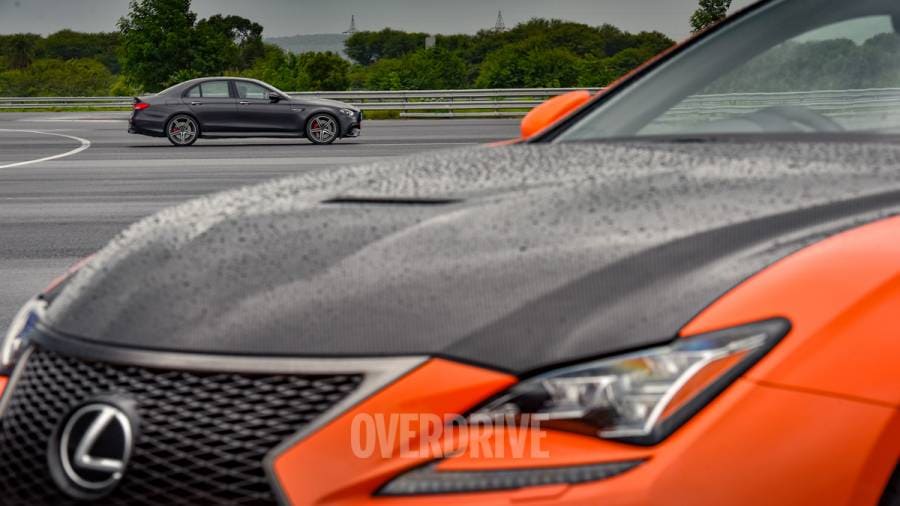

Surprisingly as a straight line tool, it's the Germans who do the muscle car the best, at least in the context of these three. Though, with Ford exiting the country with locally-made products, and the promise of fully-imported Mustangs and the Mustang Mach-E fully electric SUV to look forward to, we can hope to redo this battle soon, with the newest Lexus LC500 to join the fray as well. Who knows? Maybe old-school muscle isn't always the best way forward. Or, maybe, just maybe, it is.
This story first appeared in the OVERDRIVE September 2021 23rd Anniversary issue.
Photography by Anis Shaikh
Starts Rs 74.62 Lakhs
4951cc
Automatic
401
515
-NA-
-NA-
4999cc
Automatic
473
527
-NA-
